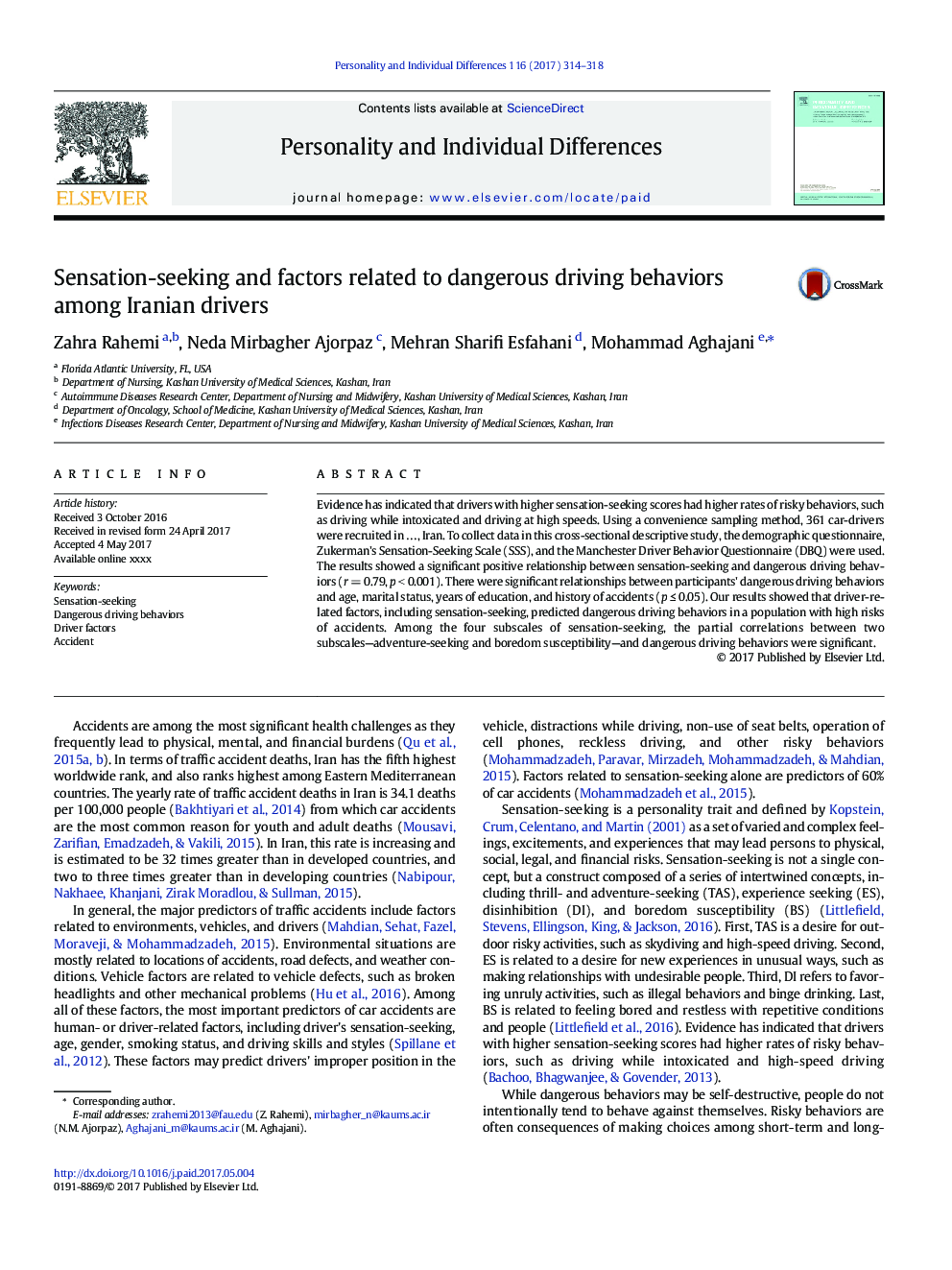| Article ID | Journal | Published Year | Pages | File Type |
|---|---|---|---|---|
| 5035620 | Personality and Individual Differences | 2017 | 5 Pages |
Abstract
Evidence has indicated that drivers with higher sensation-seeking scores had higher rates of risky behaviors, such as driving while intoxicated and driving at high speeds. Using a convenience sampling method, 361 car-drivers were recruited in â¦, Iran. To collect data in this cross-sectional descriptive study, the demographic questionnaire, Zukerman's Sensation-Seeking Scale (SSS), and the Manchester Driver Behavior Questionnaire (DBQ) were used. The results showed a significant positive relationship between sensation-seeking and dangerous driving behaviors (r = 0.79, p < 0.001). There were significant relationships between participants' dangerous driving behaviors and age, marital status, years of education, and history of accidents (p â¤Â 0.05). Our results showed that driver-related factors, including sensation-seeking, predicted dangerous driving behaviors in a population with high risks of accidents. Among the four subscales of sensation-seeking, the partial correlations between two subscales-adventure-seeking and boredom susceptibility-and dangerous driving behaviors were significant.
Keywords
Related Topics
Life Sciences
Neuroscience
Behavioral Neuroscience
Authors
Zahra Rahemi, Neda Mirbagher Ajorpaz, Mehran Sharifi Esfahani, Mohammad Aghajani,
